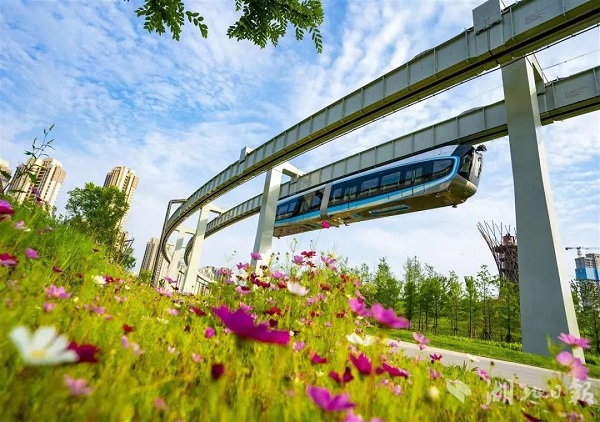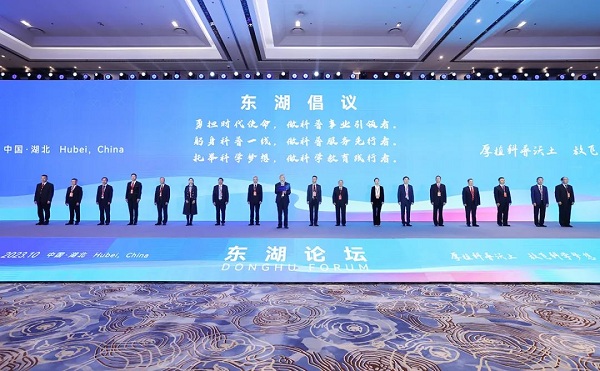Hubei report gives retrospective on 2023 accomplishments

The Optics Valley sky rail is an important infrastructure project for Wuhan New City. [Photo/Hubei Daily]
The report on what the Hubei government had achieved over 2023 was released on Jan 30. It included the increase in development scales of the province's "Optics, IC, displays, terminal, network" cluster and life and health cluster, which reached 847 billion yuan ($117.99 billion) and 881 billion yuan, respectively.
The added value of Hubei's digital economy contributed to a 47 percent surge in its GDP, and its computing and big data revenue came in at 120 billion yuan. In addition, Hubei's software industrial scale accounted for 44 percent of that in the six provinces of Central China.
Four individuals and two research teams in the province won the National Outstanding Engineer Award. Eight State-level major sci-tech facilities, as well as 163 national innovation platforms have been built. The province also reported 16 national innovation-oriented industrial clusters and 678 national specialized and sophisticated enterprises.
Over the last year, China's first optoelectronic intellectual property rights operation center settled in Hubei. The province now boasts 84 national sci-tech firm incubators, 25,000 high-tech enterprises, and 35,000 small and medium-sized sci-tech companies.
The province also successfully hosted more than 60 international and national events, and its construction on the Optics Valley Sci-tech Corridor is proceeding well, with 134 key projects progressing smoothly.

The 2023 Donghu Forum is held in the Optics Valley of China. [Photo/WeChat account of Optics Valley of China]
In 2024, Hubei is expected to make full use of a series of globally influential conventions and conferences, such as the Donghu Forum and 2024 China-Africa Innovation Cooperation Conference, in a bid to better integrate into the global innovation network.
The province's unique "51020" modern industrial cluster will be further consolidated, with the added value of industries above a designated size set to rise by over 7 percent, and five advantageous sectors, including optoelectronic information and high-end manufacturing, to achieve a series of technological breakthroughs.
Hubei will continue to support the development of its computing power, big data, quantum science and technology sectors. Its three pillar industrial clusters – "Optics, IC, displays, terminal, network", life and health, and auto manufacturing and services – are estimated to reach the trillion-yuan level this year.
Hubei will implement the 6G network innovation project, as well as frontier projects in humanoid robotics. It will accelerate the industrial layout in life sciences, AI large models, cutting-edge materials, and future energy. It aims to establish a number of concept validation centers, small and medium-sized test bases, and makerspaces.
The province also plans to nurture over 10 benchmark zones for the digital economy, establish more than 200 unmanned factories and digital twin factories, and achieve a growth of over 15 percent in the added value of its digital economy.


